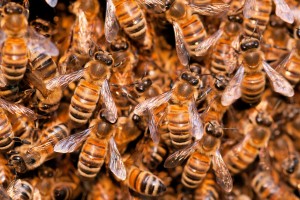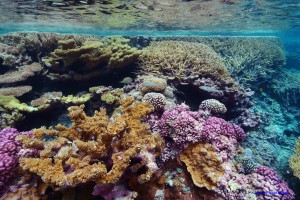

Features
Sneak Peek:
Tapping into Nature Introduction
Cas Smith
Share
Learn more about our bioinspired innovation work and services by emailing us at [email protected]
EDIT: The paper is now available! Click here to read Tapping into Nature: The Future of Energy, Innovation, and Business, Terrapin’s white paper on bioinspired innovation. Through nine cross-sector topics, the paper explores strategies abstracted from nature and how pioneering companies are leveraging these strategies for bioinspired innovation. This paper is a product of Terrapin’s experience developing bioinspired technologies.
“I’m not trying to imitate nature; I’m trying to find the principles she’s using.”
R. Buckminster Fuller
ABSTRACT
By tapping into billions of years of research and development, innovative companies are abstracting strategies from the natural world and developing truly transformative technologies. Organisms have flourished on Earth for nearly 4 billion years, continuously adapting to our planet’s diverse environments and diffuse energy flows. Tapping into Nature explores how pioneering companies are leveraging these adaptations and demonstrates the vast and largely untapped market potential of bioinspired innovation.
In this paper, Terrapin explores nine cross-sector topics and selects natural strategies related to each. The biological strategies represent only a fraction of the designs found in nature. Each section then presents bioinspired products—some of which are Terrapin collaborations—that have been developed by companies using these strategies. All told, this set of strategies and products begins to convey the breadth of innovation in the natural world.
The infographic “Market Readiness of Bioinspired Innovations” on page 8 showcases over 100 examples of bioinspired technologies, ranging from early concepts to profitable commercial products. The broader economic and environmental potential of this rapidly growing field is detailed on page 16 in “Bioinspired Innovation: An Economic Engine.” By tracing the path from biology to commercialized technologies, we hope to inspire you to tap into nature at your organization.
INTRODUCTION

Bee communication within hives inspired REGEN Energy’s Swarm Energy Management™ systems that cut the peak energy demand of building heating and cooling systems. Copyright Umberto Salvagnin/Flickr.
Nearly all living things rely on diffuse and transient flows of energy and materials. And yet, life thrives. Organisms are able to procure materials and assemble themselves—essentially constructing “technologies”—using only the resources that are locally available.
Increasingly, innovative companies are looking to the living world for inspiration and direction. Nature provides a rich yet largely unexplored library of technologies that process and manage information, materials, and energy. Abstracting ideas from this catalogue opens the way to technological breakthroughs and profitable innovation that are often unattainable using conventional approaches to product design and development.
“Bioinspired innovation,” a term used throughout this paper, encompasses two distinct categories. One of them, bioutilization, is the use of organisms or biological materials to fulfill a human need. The other, biomimicry, is the abstraction and translation of biological principles into human-made technology; it is also a method of assessing whether a design concept is likely to “create conditions conducive to life.” The terms are related yet distinct. Either approach can be implemented in a way that benefits society and the environment.
BLUEPRINTS FOR INNOVATION
Life can be thought of as a long-running research and development program that has yielded invaluable design ideas. Long before human beings began tinkering in labs, organisms had developed carbon capture and sequestration systems, water harvesting techniques, water transport systems, adhesives, colorfast materials, electronic circuits, distributed energy conversion systems, color displays, light absorbers, insulation, thermal dissipators, and information storage, along with countless other designs. All of these are blueprints for technologies that are not only useful to society but are also integral to the global economy. Companies that learn from nature are increasing revenues, mitigating risk, reducing costs, and supporting the development of a sustainable society.
To understand how the biological world works—how it builds material, creates form, and constructs intricate systems—is to understand the inherent physical constraints of our planet. Organisms have operated within these rules for nearly 4 billion years, and human technology operates using the same rulebook. Through bioinspired innovation, companies can not only discover design ideas in nature but also emulate nature by embedding sustainability into the development of new products and processes. By doing so, businesses can begin to see environmental challenges such as climate change as opportunities rather than economic risks.
ACCELERATING INNOVATION

The sequestration of carbon by corals inspired Blue Planet’s cement additives made from waste CO2 streams. Copyright USFWS Pacific Region/Flickr
A flurry of innovation occurred in the twentieth century that had a positive, transformative effect on economies and societies. Today, however, many companies and private investors develop and invest in “widgets [and] irrelevances” that neither produce healthy returns nor address pressing societal needs. To develop the world-changing and profitable innovations of tomorrow, companies and investors need new sources of ideas.
Harvard Business School’s Dr. Rosabeth Moss Kanter recently said that before innovation proves successful, it is merely “somebody’s wild idea that competes with every other wild idea.” Indeed, technological innovation is an exercise in risk. Many businesses attempt to innovate by reformulating their existing products or emulating a competitor’s product. However, these avenues often only provide incremental value to both businesses and society, not transformative breakthroughs.
Creating an entirely new product category that alters or creates markets (so-called “disruptive innovation”) requires insightful strategy, serendipity, or both. Bioinspired innovation offers a real opportunity for companies to create products and processes inspired by proven designs: the attributes of organisms that perpetuate in nature because they solve particular challenges.
Companies that leverage bioinspired innovation can increase revenues, reduce costs, and meet global needs. They can also increase their environmental, social, and corporate governance (ESG) rating, attracting investments from the $45 trillion managed by firms supporting this trend in financial markets., By looking outside the bounds of their traditional disciplines, companies are able to transform markets and increase returns.
At Terrapin, we believe that natural systems offer solutions to industrial challenges. We believe that bioinspired innovation transforms businesses and industries, improves quality of life, and enhances the natural environment. This paper is a product of our experience developing bioinspired technologies and a testament to the potential we see in a bioinspired approach to research and development.
Terrapin works with companies, academic researchers, and governmental organizations to transition biologically-inspired technology into the market. Among our services, we:
- introduce organizations to the biomimetic design process through presentations, case studies, and brainstorming workshops,
- provide biological research,
- evaluate technologies,
- partner with teams to co-develop technologies,
- advise on market needs and marketing language,
- connect research teams with strategic partners, and
- assist teams in securing funding for projects.
Want to keep reading? Click here to access the paper online or as a PDF!
*Header and feature image copyright NASA Earth Observatory’s Robert Simmon and NOAA’s Chris Elvidge.
Filed under:
Cas Smith
Cas is a biological engineer with a passion for technology based in and inspired by biology. He served as the project manager for Terrapin's technology development services. Cas believes that using biotechnology will lead to a more bountiful and prosperous world for all living things.
Topics
- Environmental Values
- Speaking
- LEED
- Terrapin Team
- Phoebe
- Community Development
- Greenbuild
- Technology
- Biophilic Design Interactive
- Catie Ryan
- Spanish
- Hebrew
- French
- Portuguese
- Publications
- Occupant Comfort
- Materials Science
- Conference
- Psychoacoustics
- Education
- Workshop
- Mass Timber
- Transit
- Carbon Strategy
- connection with natural materials
- interior design
- inspirational hero
- biophilia
- economics of biophilia
- Sustainability
- wood
- case studies
- Systems Integration
- Biophilic Design
- Commercial
- Net Zero
- Resorts & Hospitality
- Energy Utilization
- Water Management
- Corporations and Institutions
- Institutional
- Ecosystem Science
- Green Guidelines
- Profitability
- Climate Resiliency
- Health & Wellbeing
- Indoor Environmental Quality
- Building Performance
- Bioinspired Innovation
- Biodiversity
- Residential
- Master Planning
- Architects and Designers
- Developers and Building Owners
- Governments and NGOs
- Urban Design
- Product Development
- Original Research
- Manufacturing
- Industrial Ecology
- Resource Management
- Sustainability Plans
- Health Care
- Carbon Neutrality


